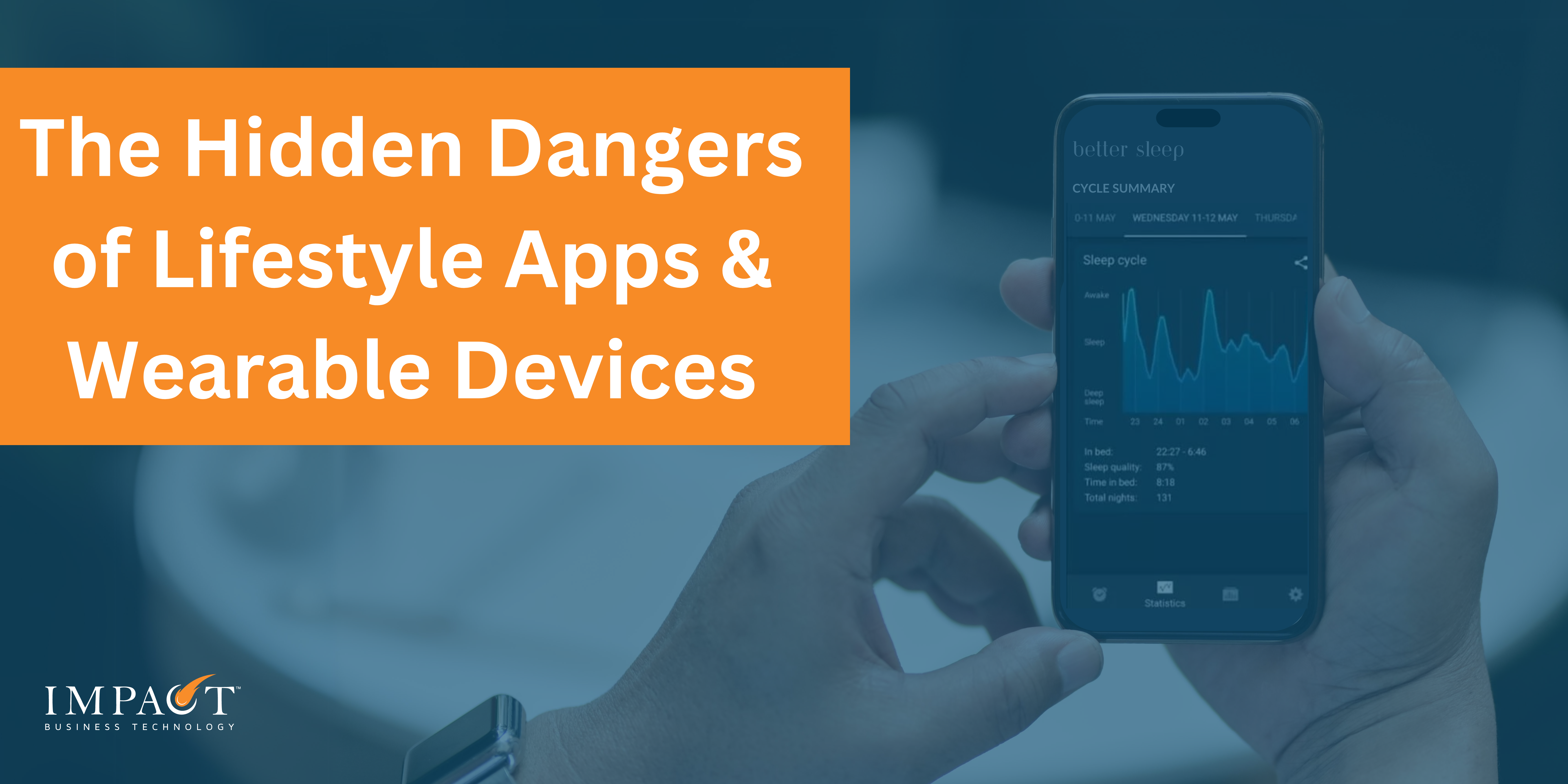In today’s tech-savvy world, lifestyle apps and wearable devices have become an integral part of our daily lives. They help us monitor our fitness levels, track our sleep patterns, manage our diets, and even keep tabs on our mental health. However, as convenient as these tools are, they come with a set of potential data risks that users must be aware of.
The rapid development and launch of apps and devices in a highly competitive consumer space means that services are sometimes launched without adequate testing or security. Given the immense amount of data we share with these services and the heightened potential for data breaches, it’s crucial to understand the risks involved—and whether the benefits outweigh them.
RISK FACTORS
Listed below are the top 4 risks associated with the use of lifestyle apps and wearable devices:
1. PRIVACY CONCERNS
-
-
- Data Collection and Storage Most lifestyle apps and devices collect vast amounts of personal data, including your location, heart rate, sleep patterns, and more. This data is often stored in the cloud, making it accessible to not only the app developers but also potentially to unauthorized third parties through data breaches.
- Inadequate Privacy Policies Many users do not thoroughly read the privacy policies of these apps, which often include clauses allowing the sharing of data with third parties for advertising or research purposes. This can lead to your personal information being used in ways you did not anticipate or consent to. It’s essential to review and limit app permissions to only what is necessary for the app to function. Strive to find a balance between the convenience of the service and the amount of personal information you are willing to share.
-
2. DATA SECURITY RISKS
-
-
- Hacking and Data Breaches The more data these devices collect, the more attractive they become to hackers. A breach can expose sensitive personal information. For example, if an app tracks your location, a hacker could potentially know your daily routines and whereabouts, such as when you’re on vacation or out of the office. Apps that track your sleep and stress levels could help an attacker choose the most opportune time to launch a phishing or cyberattack against you.
-
3. LACK OF REGULATION
-
-
- Regulatory Gaps The rapid development of technology often outpaces the creation of regulations to protect consumers. Many countries lack comprehensive laws governing the collection, storage, and sharing of personal data by lifestyle apps and devices, leaving users vulnerable.
- Inconsistent Enforcement Even in regions where data protection laws exist, enforcement can be inconsistent. Companies may not always face significant penalties for failing to protect user data, reducing their incentive to implement stringent security measures.
-
4. PERSONAL SAFETY CONCERNS
-
-
- Routine Exposure Criminals can exploit patterns in your data to predict your daily routines. For example, if you regularly jog the same route at a specific time, someone could use this information to plan an attack. The detailed data shared by some apps can inadvertently reveal when you are away from home, your usual routes, and even isolated spots where you might be more vulnerable.
- Stalking Risks Location-sharing features, while convenient for staying connected with friends, can also be misused by stalkers or those with harmful intentions. Even if you think you’re only sharing your location with trusted contacts, breaches in the app’s security could expose this data to others.
-
BEST PRACTICES
There are best practices you can apply to ensure your safety and the security of your data when using lifestyle apps and wearable devices, see 9 here:
-
- Review Privacy Policies Thoroughly
Always read and understand the privacy policies of the apps and devices you use. Pay attention to how your data will be collected, stored, and shared.
-
- Limit Permissions
Only grant the necessary permissions that the app requires to function. Avoid granting access to your location, contacts, or other sensitive data unless absolutely necessary.
-
- Use Strong, Unique Passwords
Protect your accounts with strong, unique passwords for each app and device. Consider using a password manager to help you manage your credentials securely.
-
- Enable Two-Factor Authentication (2FA)
Where possible, enable 2FA to add an extra layer of security to your accounts. This makes it harder for unauthorized users to gain access, even if they have your password.
-
- Regularly Update Apps and Devices
Keep your apps and devices up to date with the latest software and firmware. Updates often include security patches that protect against vulnerabilities.
-
- Be Cautious with Location Sharing
Disable location-sharing features when not in use, and be mindful of who you share your location with. Avoid sharing real-time location data publicly.
-
- Vary Your Routines
If you use fitness or location-tracking apps, consider varying your routes and exercise times to avoid creating predictable patterns that could be exploited.
-
- Review App Settings Regularly
Periodically review and adjust the privacy and security settings within each app. Ensure that you’re comfortable with the data being collected and shared.
-
- Monitor Your Data
Keep an eye on what data your apps and devices are collecting. Some apps provide insights into what information they track—use these tools to stay informed.
CONCLUSION
While lifestyle apps and wearable devices offer numerous benefits, they also pose significant data risks. Being aware of these risks and taking proactive steps to protect your information is crucial. By understanding the potential dangers and implementing best practices for data security, you can enjoy the advantages of these technologies while minimizing your exposure to data breaches and privacy invasions.
We hope you found this blog post helpful and informative. To get articles like this delivered straight to your inbox, subscribe to our newsletter today!
To learn more about Impact BT and the ways we transform the way businesses leverage IT, visit our solutions page or contact us today to get in touch with a member of our team.

